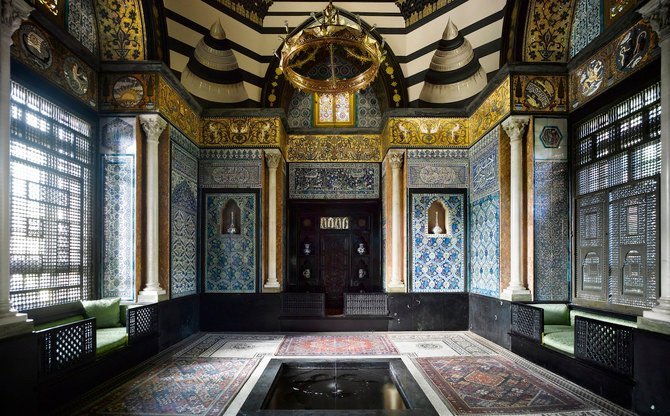DUBAI: The London home of Victorian artist Lord Frederic Leighton reopened on Saturday after an 18-year, $8.9 million restoration of its interior, including its famous Arab Hall.
The Grade II-listed building was restored by architecture firm BDP and reopens to the public with a year-long exhibition program presented across two new gallery spaces.
Located in West London, the story of this sumptuous space begins with one of the Victorian era’s most-distinguished artists and travelers, Lord Frederic Leighton, who was only in his mid-thirties when he started building his red-brick house and studio in the Holland Park neighborhood in 1864.
The two-story house was designed by architect George Aitchison. For more than 30 years, until Leighton’s death in 1896, the sophisticated house was an evolving project, featuring a library, a dining room, a grand staircase, a blue ‘Narcissus Hall’ and an impressive studio drenched in natural light. The only ‘private’ part of the house was Leighton’s simple bedroom, accommodating a single bed.
One room in particular was crowned the star of Leighton’s house: the Arab Hall.
“It was always commented on that the exterior of the house was relatively plain and didn’t give away the richness of the interiors, and that still is the case,” Leighton House Museum’s senior curator Daniel Robbins previously told Arab News. “People will come into the house and have no idea that the Arab Hall is there. So when they discover it, it never ceases to amaze them. If people know Leighton House, the one thing they’ll know it for is the Arab Hall.”
Construction on the Arab Hall commenced in 1877, inspired by ‘La Zisa’ (or ‘Al-Aziza’ in Arabic) — an ancient Arab-Norman palace in Palermo, Sicily. Both Leighton and Aitchison were drawn to its honeycombed wall niches, golden mosaics and fountains. Leighton’s Arab Hall turned into an intimate oasis, with walls of visually stunning tiles imported from Syria, Iran, and Turkey and a shimmering mosaic frieze depicting vines, deer, birds, flowers, mythical figures, over which looms a majestic golden dome.
Arabic calligraphy is an integral aspect of the tiles, featuring verses from the Qur’an. Although some of them have been swapped around, disrupting the flow. “His response to the material was absolutely an aesthetic one. There’s no evidence that he had any scholarly interest in it,” explained Robbins, who has been at the museum for nearly 20 years.

